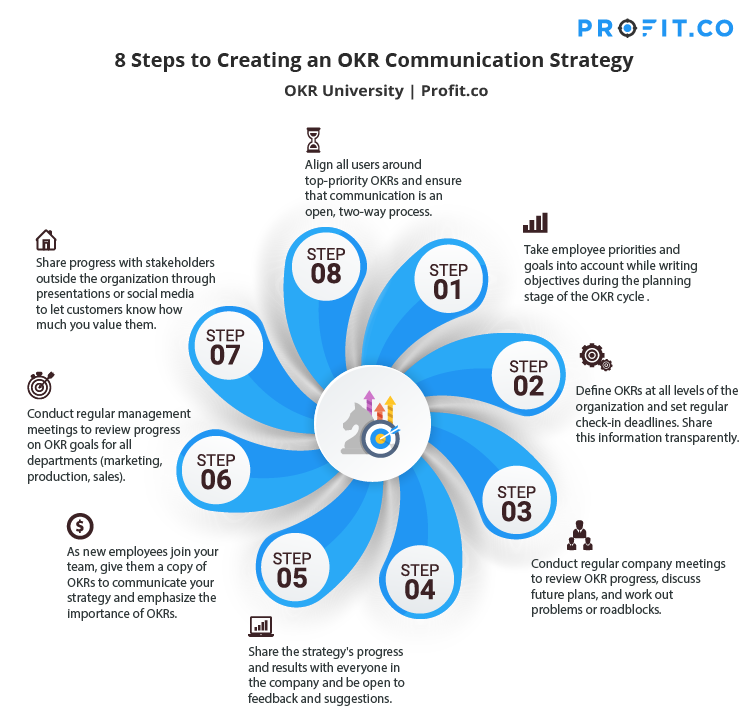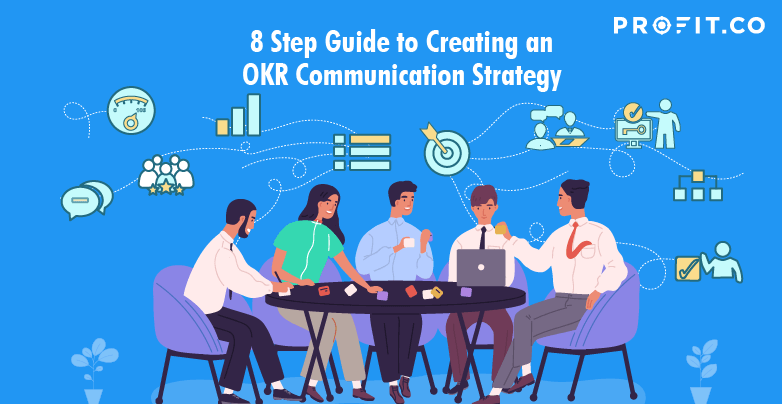Strategy is a commodity, execution is an art
OKRs as an Alignment Tool
The purpose of an OKR is to align employees and achieve business alignment across all levels and departments, with the company’s strategic goals. What are OKRs? Think of OKR goals as a common language that makes it easy for teams across the organization to work on tasks, take responsibility for their actions, and measure their performance with greater focus. OKRs can achieve horizontal alignment by setting goals that contribute to one another across every department. These include things like customer satisfaction, conversion rates, and employee engagement. For each of these important components of an organization, more than one department has to step up to the plate– but only one department, team, or individual should own the objective itself. It’s also important to have a vertical alignment of OKRs, also known as top-down or bottom-up alignment at each level of your company so managers and employees can see how their top priorities contribute directly to company-wide goals.Communication and Aligning Employees to Strategy
After you’ve created your OKR goals, it’s time to get them in front of everyone who needs to know about them! Transparency and communication is key when you want to put a strategy into action. You’ll need all the support you can get. Make sure everyone is onboard and very clear on what they need to achieve. But how would you get people on the same page as you? It’s not enough to just tell them about the new OKRs. You should also give a clear explanation of what they are expected of, what date they should have their projects and tasks completed, and how to know if their goal is accomplished. This is the most effective way to align team members to your strategy. The agile approach comes in handy. It starts by breaking down your strategy implementation and OKRs into smaller pieces that can be accomplished in a few hours or days, then having employees share their progress with the team every day at a daily standup meeting.Transparency of OKR Tracking
OKRs can surely speed up the process, but it won’t happen without transparency. You need to ensure that your employees can see how they’re doing with regard to their OKRs. This is why transparency and OKRs are tightly knit together; you want them to know when something goes wrong and what steps are being taken for it to be corrected. You can do this by discussing employees’ progress in company-wide meetings or one on one. When you do this, your employees will know that the company is forward-thinking and invested in success. While you’re at it, you should also provide visibility into the company’s performance on key KPIs through a dashboard or report. This will keep employees informed and up-to-date with how the company is doing as a whole, and effectively communicate strategy clearly across the entire business. Until and unless you consider employees important stakeholders in the company’s success, OKRs won’t be able to help employees achieve what matters most for your organization. To help communicate strategy and maintain transparency throughout the entire quarter, you can use an agile and intuitive OKR management software such as Profit.co. You can start using Profit.co completely free today and achieve more, more efficiently.Communicating Strategy Using OKR in 8 Steps
You can communicate your strategy using OKRs in these 8 simple steps:- Hold a meeting with all employees to find out what their goals are and, wherever possible, connect these with the strategic goals for the organization.
- Add goals to an OKR tracking software or spreadsheet and set deadlines and checkpoints along the way to help measure progress and maintain transparency.
- Conduct regular company meetings in which you review progress on OKRs, ask for feedback, discuss difficulties that need to be overcome, and future plans.
- Share progress and results with everyone in the company to help everyone stay aligned, on track, and aware of one another’s priorities and progress.
- As new employees join your team, give them a copy of OKRs as the first order of business. This directly communicates strategy and emphasizes OKR importance.
- Conduct regular management meetings to review progress on OKR goals for all departments and ensure everyone is aligned (marketing, production, sales).
- Share the strategy’s progress with stakeholders outside the organization through presentations or other media channels like social networks and videos. This will inform customers as well as show them how much you value their business!
- Use objectives to align people within an organization so that they can execute objectives together and create measurable key performance indicators. Keep communication open and reciprocal between managers and employees.





